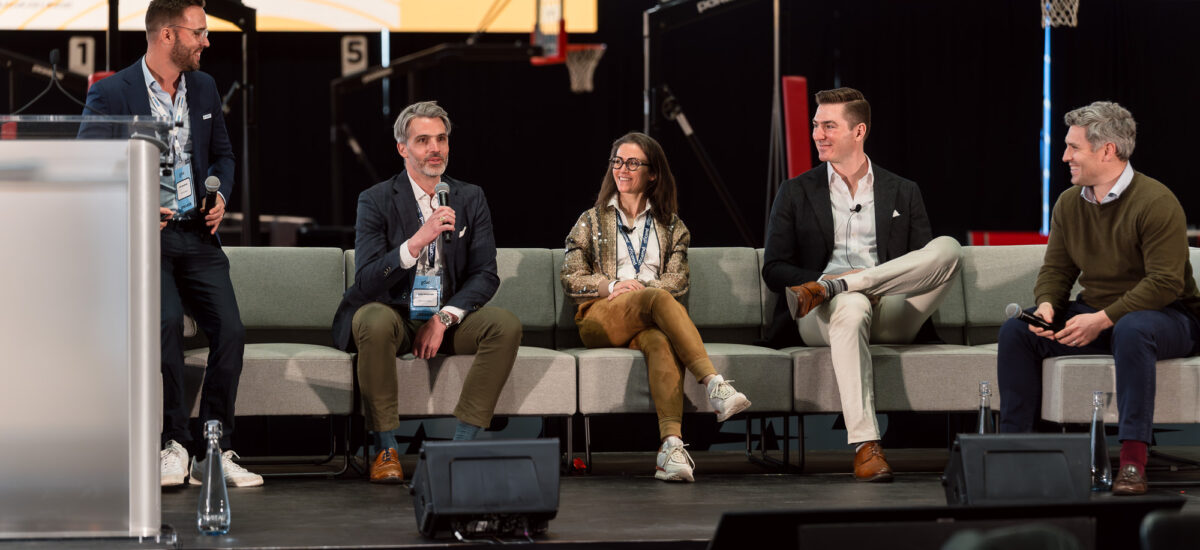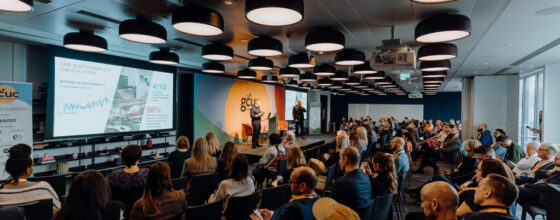Is This the Year? How Traditional Office Is Adopting Flex

Is This the Year? How Traditional Office Is Adopting Flex
At GCUC, we’re watching the walls between traditional office and flexible workspace come down in real time — and nowhere was that more evident than during our panel from GCUC Boston, “How Traditional Office Is Adopting Flex (Is This the Year?)”.
Leading voices from major institutional players sat down to discuss how their organizations are adapting to a flex-driven world. Our expert panelists included:
- Will Sandford, Director of Coworking, Yardi Systems
- Nate Pinsley, Managing Director and Head of Studio, Tishman Speyer
- Locke McKenzie, Strategic Tenant Relations, Deka Immobilien
- Christelle Bron, Americas Agile Practice Leader, CBRE
- Andrew Dunn, VP of Flexible Workspace, Brookfield
Together, they explored the real shifts happening — and the real challenges still ahead.
What Flexibility Means for Traditional Office
Today’s office landlords aren’t just dabbling in flex — they’re investing in:
- Launching their own coworking brands
- Partnering with proven coworking operators
- Amenitizing their buildings to offer hospitality-grade experiences
- Creating move-in ready, tech-enabled suites for tenants of all sizes
Flexibility is becoming a standard part of the portfolio offering, not an add-on or afterthought.
Challenges in Scaling Flex Across Portfolios
Despite the momentum, the panelists were honest about the hurdles:
- Underwriting flex remains complex, given traditional valuation models based on long-term leases.
- Lenders are cautious, especially when returns look different from legacy deals.
- Flex is highly market-specific — what works in one city, or even one building, may not work in another.
- Creating a unified user experience across different asset types and offerings is still a major work in progress.
In short: Flex is powerful, but scaling it across institutional portfolios isn’t plug-and-play.
The Tenant Demand Driving Flex Adoption
Christelle Bron from CBRE shared how corporate tenants — especially for teams of 20–50 people — are increasingly turning to flex options for:
- Handling peak utilization
- Securing short-term space quickly
- De-risking long-term real estate commitments
Flexibility today is not a “nice-to-have” — it’s a competitive necessity for occupiers navigating rapid change.
How Institutional Players Are Responding
Each organization is crafting its own approach:
- Tishman Speyer (through their Studio platform) is investing in integrated flex solutions.
- Brookfield is developing flexible workspace offerings where it makes the most financial and operational sense.
- Deka Immobilien brings a European perspective, focusing on strategic tenant relations and targeted amenitization.
- Yardi plays a critical role by providing the technology backbone that enables flex operations to run smoothly.
Across the board, the panelists agreed: Flexibility will be critical to future-proofing assets and building stronger tenant relationships.
The Big Takeaway
Is this the year traditional office truly embraces flex?
The answer from the panel: It’s happening — but success depends on precision, creativity, and a deep understanding of evolving tenant needs.
At GCUC, we believe the future isn’t about one model replacing another — it’s about hybrid ecosystems where traditional and flexible coexist, creating better, more human-centered experiences for everyone.
And that future is already taking shape.
To catch sessions like this, join us at our next conference. We have two more on deck this year in the UK. Full details can be found here.






